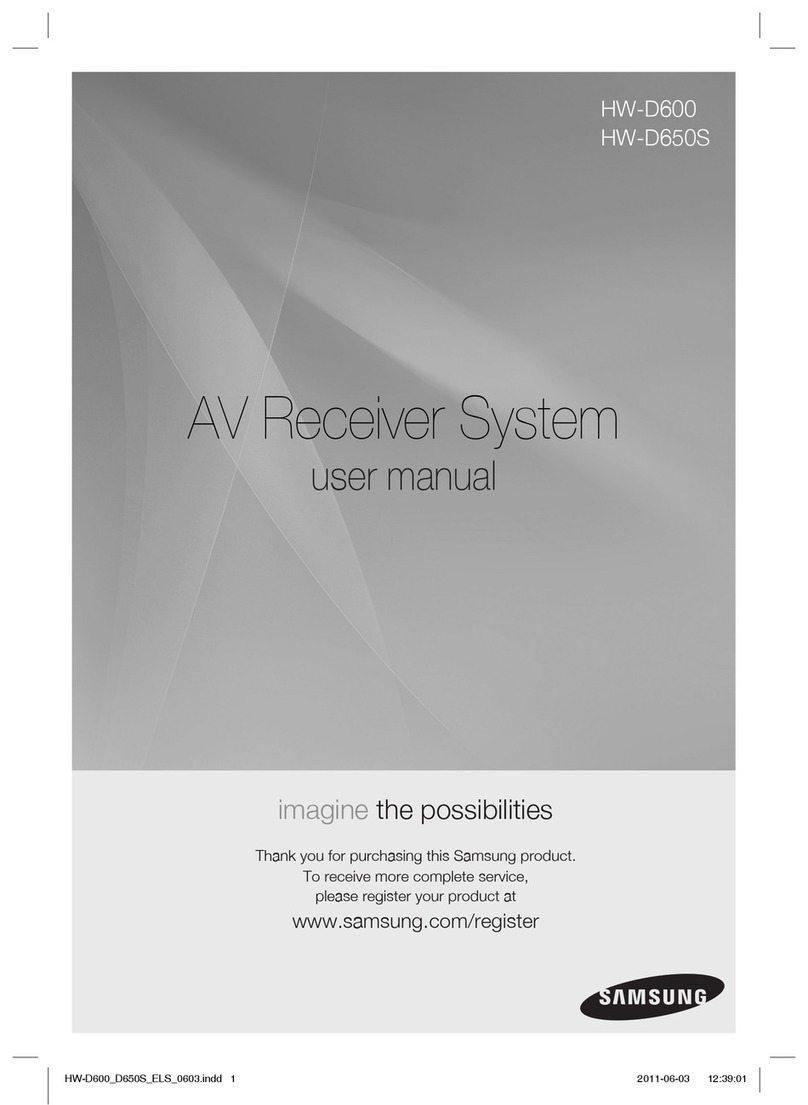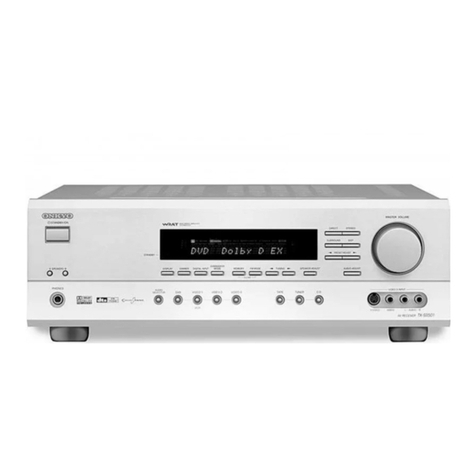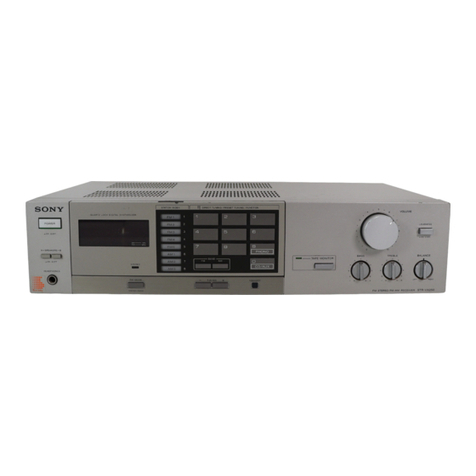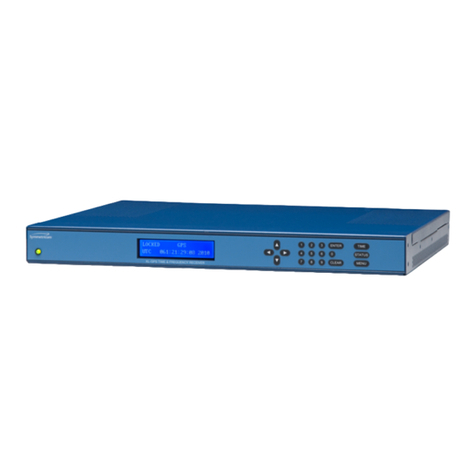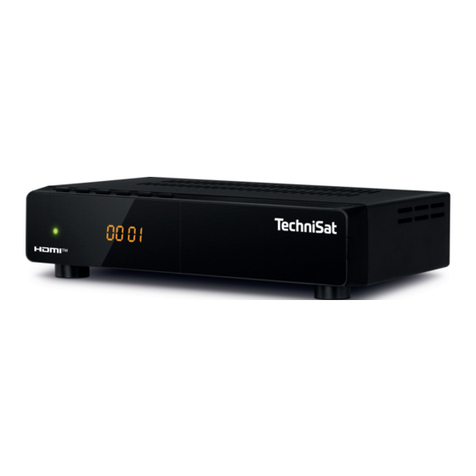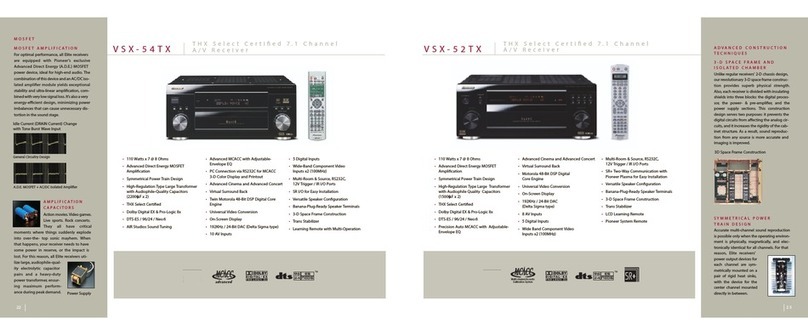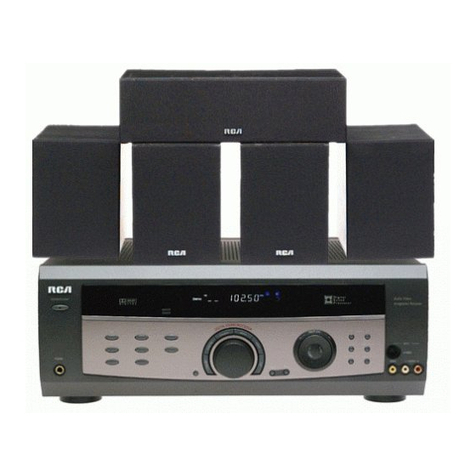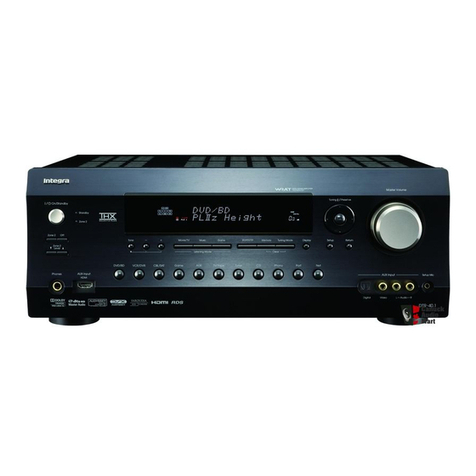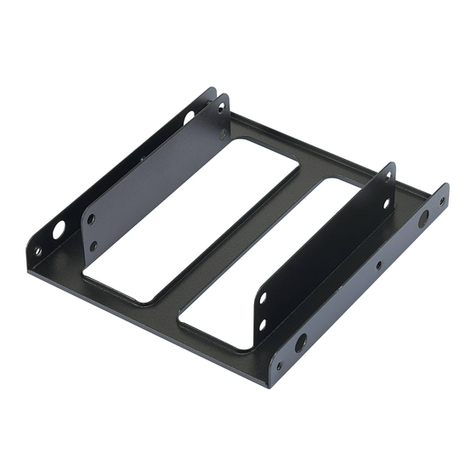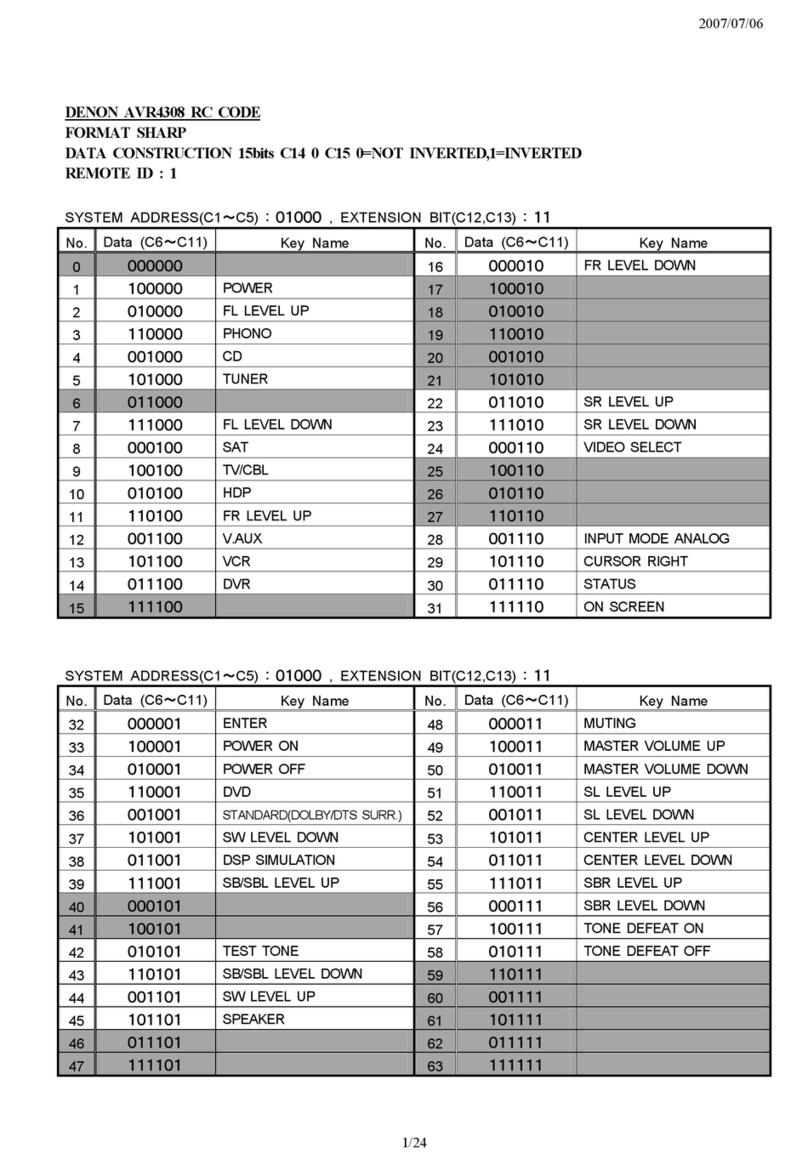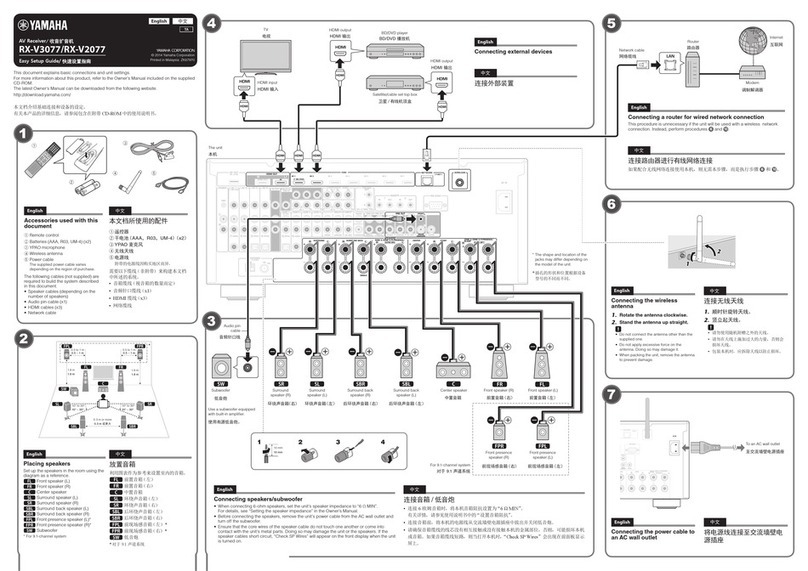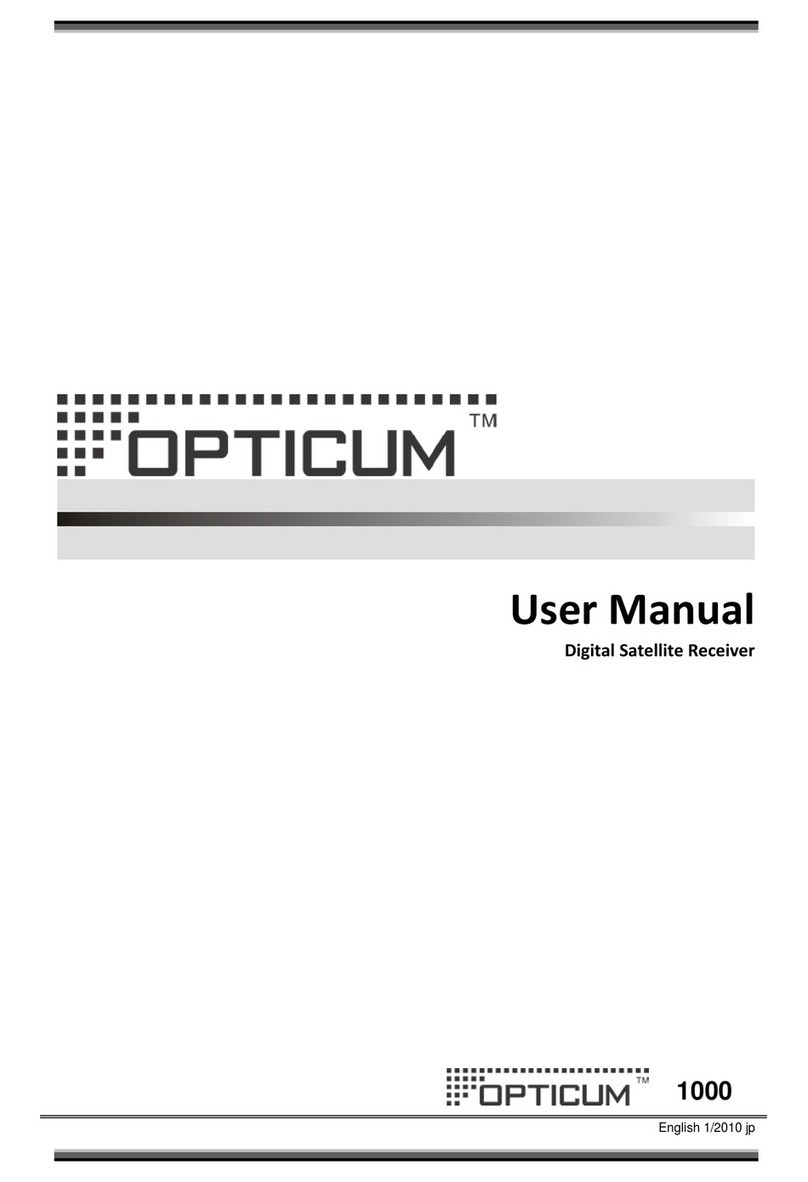RF Application RFM-11031K User manual

FM Receiver user manual
RF Application Co.,Ltd. All rights reserved. Version 1.0 -Page 1-
FM Receiver
Model: RFM-11031K
Model: RFM-11032K
Model: RFM-11033K
Model: RFM-11034K
Model: RFM-11035K
Model: RFM-11036K
User Manual

FM Receiver user manual
RF Application Co.,Ltd. All rights reserved. Version 1.0 -Page 2-
CONTENTS
General Information
The RFM-1103xK is the latest in a series of receivers for demanding applications that
require exceptional sensitivity and selectivity. It is especially suited for repeaters, audio and data
links, packet radio, and remote control. The RFM-1103xK was designed to provide a single-
channel UHF FM receiver for reception in the VHF and UHF bands.
Installation Mounting
Some of support should be provided under the PC board, generally mounting the board
with 4 holds. The receiver board relies on the mounting hardware to provide the DC and speaker
ground connections to the ground plane on the board.
Electrical Connections
Power supply should be connected to the connector on the PC board with #4 wire, which
can be extended to a connector or feed through capacitors used on the cabinet in which it is
installed. Be very careful not to route the wiring near RF components on the board, for instance
underneath the board. The receiver operates on +13.6 – 18.0 Vdc at about 300 mA peak with full
audio. A well-regulated power supply should be used. Be sure that the power source does not
carry high voltage or reverse polarity transients on the line, since semiconductors in the receiver
can be damaged.
-VCC
+VCC

FM Receiver user manual
RF Application Co.,Ltd. All rights reserved. Version 1.0 -Page 3-
Audio Connections
Be sure to observe polarity! Speaker. A loudspeaker with an impedance of 8ohms or
greater should be connected to BNC Female connector. Use of lower impedance speaker or
shorting of speaker terminal can result in IC damage. The receiver can also drive higher
impedances, such as the 1K to 20K input impedances of repeater controller boards. There is no
need to load down the output to 8 ohms.
Antenna Connections
The antenna connection should be made to the receiver with a BNC Female connector of
the low-loss type made for RF. If you want to extend the antenna connection to a panel connector,
we recommend using a short length of RG-174/u coax with the plug and keep the pigtails very
short. We do not recommend trying to use direct coax soldered to board or another type of
connector. The method designed into the board results in lowest loss practical.
Right audio output
Left audio output
Antenna input

FM Receiver user manual
RF Application Co.,Ltd. All rights reserved. Version 1.0 -Page 4-
LCD Connections
The LCD can display as 16x2 typical. You can connect to receiver board.
Quick Specification Reference
- Operating frequency
•Model: RFM-11031K 87.50 – 108.00 MHz
•Model: RFM-11032K 136.00 – 174.00 MHz
•Model: RFM-11033K 244.00 – 246.00 MHz
•Model: RFM-11034K 300.00 – 330.00 MHz
•Model: RFM-11035K 330.00 – 360.00 MHz
•Model: RFM-11036K 400.00 – 440.00 MHz
•Model: RFM-11037K 440.00 – 480.00 MHz
- Sensitivity (12dB SINAD): 0.8µV
- Audio Output: up to 1 Watts (8 ohms).
- Operating Power: +13.6Vdc at 300 mA
- Size: 100mm. W x 93mm. D x 22mm. H
Operation
Turn on
Be sure that the power source does not carry high voltage or reverse polarity transients on
the line, since semiconductors in the receiver can be damaged. After you turn on, The LCD can
be displayed as:
Then the LCD will displayed as:
The PLL of receiver will tune. After the PLL is locked to the frequency, LCD will be displayed as:
Connect to LCD

FM Receiver user manual
RF Application Co.,Ltd. All rights reserved. Version 1.0 -Page 5-
Frequency Setting
This menu lets you read and set the operating frequency.
You can modify the set frequency using theUP (the frequency increases) and DOWN (the
frequency decreases) push buttons.After having set a new frequency value, the exciter will
release from the current frequency and it will latch onto the new operating frequency.
Adjustments
Frequency correction
The frequency from VCO will oscillator as frequency setting. The frequency can be error in
the long time in use. You can adjustment to frequency correction by varicap as the picture as
below. The VCO will oscillate frequency different from the receiver frequency such as, if you want
to receiver at 330.000MHz, The VCO will oscillate as 319.300 MHz (300.000-10.700 MHz)
Increase frequency
Decrease frequency
Frequency adjustment
correction

FM Receiver user manual
RF Application Co.,Ltd. All rights reserved. Version 1.0 -Page 6-
LCD contrast
The LCD display can adjust the contrast as picture below:
Mono / Stereo mode
You can select of receiver to mono or stereo mode by jumper.
Stereo and pilot adjustment
You can adjust to stereo clearance by potentiometer.
LCD contrast
Mono or stereo
Stereo adjustments

FM Receiver user manual
RF Application Co.,Ltd. All rights reserved. Version 1.0 -Page 7-
Volume control
You can adjust to audio output signal by potentiometer.
TROUBLESHOOTING
General
The usual troubleshooting techniques of checking dc voltages and signal tracing with an
RF voltmeter probe, oscilloscope and spectrum analyzer will work well in troubleshooting the
RFM-1103xK. DC voltage charts and a list of typical audio levels are given to act as a guide to
troubleshooting. Although voltages may vary widely from set to set and under various operating
and measurement conditions, the indications may be helpful when used in a logical
troubleshooting procedure. The most common troubles in all kits are interchanged components,
cold solder joints, and solder splashes. Another common trouble is blown transistors and IC's due
to reverse polarity or power line transients. Remember if you encounter problems during initial
testing that it is easy to install parts in the wrong place. Don't take anything for granted. Double
check everything in the event of trouble.
Current Drain
Power line current drain normally is about 200 mA with volume turned down and up to 300
mA with full audio output. If the current drain is approximately 300 mA with no audio output, check
to see if voltage regulator is hot. If so, and the voltage on the 12V and 5V line is low, there is a
short circuit on the somewhere. If you clear the short circuit, the voltage should rise again
Hum and Noise
The VCO and loop filter are very sensitive to hum and noise pickup from magnetic and
electrical sources. Some designs use a shielded compartment for VCO’s. We assume the whole
board will be installed in a shielded enclosure, so we elected to keep the size small by not using a
separate shield on the VCO. However, this means that you must use care to keep wiring away
from the VCO circuit at the right side of the board. Having the board in a metal enclosure will
shield these sensitive circuits from florescent lights and other strong sources of noise. Because
the frequency of a synthesizer basically results from a free running LC oscillator, the tank circuitis
very sensitive to microphones from mechanical noise coupled to the coil. You should minimize
any sources of vibration that might be coupled to the Receiver, such as motors. Excessive noise
on the dc power supply that operates the Receiver can cause noise to modulate the synthesizer
output. Various regulators and filters in the Receiver are designed to minimize sensitivity to wiring
noise. However, in extreme cases, such as in mobile installations with alternator whine, you may
need to add extra filtering in the power line to prevent the noise from reaching the Receiver.
Other usual practices for mobile installations are recommended, such as connecting the + power
and ground return lines directly to the battery in-stead of using cigarette lighter sockets or dash
board wiring.
Volume control
This manual suits for next models
5
Table of contents

